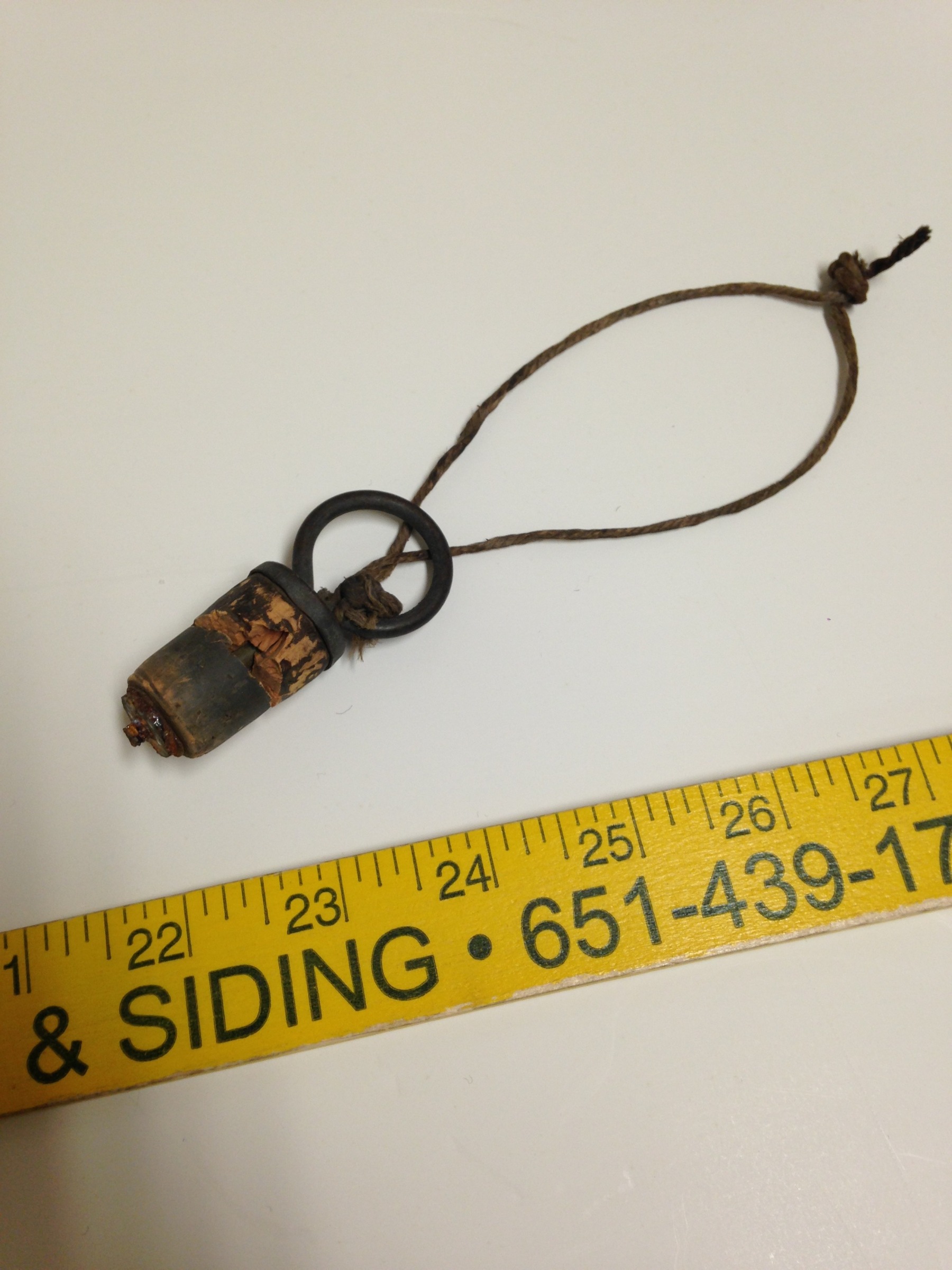Receive the Historical Messenger in your inbox once every two weeks by signing up for our mailing list!
|
This issue: Contents
Tuesday, June 14, 2016
Editor’s NoteWhew – we’ve got a lot to cover today, so let’s hop straight in it! First off, thank to everyone who attended our “Giving Faces to the Names” last Sunday with Herb Reckinger. In case you missed it, Herb is part of an amazing national project to find photographs of people listed on the Vietnam War Memorial in Washington, DC. As of June 10th, they are still missing photos of 11,464 American soldiers who were killed during the war. The families of these men and women deserve to be able to one day, not only see their loved ones’ names etched on a wall, but their faces along with it. The Vietnam Veterans Memorial Fund will not let these people slip into the obscurity of history. Visit their website and feel free to search their photograph database, if you may know someone who has access to one of these missing photographs, please reach out to Herb at 651-459-7950 or nreckinger@msn.com.
“Last month 13-year-old Olivia who is responsible for bringing the first Barn Quilt Trail to Washington County spoke at the Hay Lake School Museum. Our very own Johannes Erickson Log House is on the Barn Quilt trail. We at the Washington County Historical Society have partnered with the Barn Quilt Trail over the past year and wanted to share how to learn more about the trail and the upcoming second edition of the trail. To find information on the Barn Quilt Trail check out their website. Also “Like” them on Facebook!” (Photo: Dustyn, Olivia & her mother, Ann) Alright, so I’ve already sneaked in two News Stories in the Editor’s Note, so I’ll fly through the rest of my normal spiel: In our real New Stories you’ll read about the Annual Beer Tasting (which is this Saturday!) and the announcement of the first ever series of “Flashlight Tours” of the Warden’s House Museum! Even us at the Historical Society have no idea what today’s “What Is This Thing?!” is! Summer is the time of year for parades and in this week’s Old News you’ll read about a celebration during Minnesota’s infancy. Finally, you may have visited the Warden’s House Museum before – but do you know it’s story? Today’s Featured Article will tell the tale of the building WCHS has called ‘home’ for the last 75 years. Sean Pallas Historical Messenger editor and Warden’s House Site Manager WCHS News9th Annual Hay Lake Beer Tasting – This Saturday
Everyone’s favorite blend of history and beer makes a triumphant 9th annual return to the Hay Lake Museum this Saturday, June 18th from 4:00 to 7:00 PM and promises to be bigger and better than ever. More breweries, more food, more music, more fun! And be sure to meet our special guests this year, the craft beer fanatics over at the “Taproom Travelers” webseries. Your $15 admission not only helps the historical society, it will allow you to sample the latest and greatest alcoholic concoctions from Bent Brewstillery, Summit Brewing, Burning Brothers, Redneck Juice, St. Croix Brewing, Still H2O, Joseph Wolf Brewing, East Lake Craft Brewing, Tin Whiskers, and Lift Bridge Brewing. You’ll also get a collectable tasting glass sponsored by Opinion Brewery. Not to mention that dozens of Twin Cities businesses, sports teams, and theaters have also donated table-fulls of items and activities for our awesome Silent Auction. Cheers to History! Other Events WCHS NewsWarden’s House Flashlight Tour
For all you night owls, we are offering an inaugural Flashlight Tour of the Warden’s House Museum on Saturday, July 9th. For the first time ever, see the Warden’s House in a different light (or lack thereof). Perfect for a unique date night or simply an eerie night for you and your friends, you’ll learn about the history of the Warden’s House, the old Stillwater Prison, and a bit about how our museum has earned a reputation as one of the “Most Haunted Places in Minnesota“. Tickets are $15.00 per person and must be bought in advance. Tours will last about an hour. Space is limited. You can find more information and reserve your tickets online. Will there be ghosts? You decide. Will it be fun? Definitely! What is This Thing?!
What Is This Thing?! (Round 38) Well, I thought I was being tricky with last week’s What Is This Thing?! but within 20 minutes of sending out the newsletter, someone had not only correctly identified it as a typewriter – but had even been able to say the exact brand! Consider me impressed! Yes, this is an Oliver brand typewriter from about 1912. I was hoping to confuse a few of you because this particular model of typewriter has a rather unique arm design. You can see what I mean in this brief (10 seconds) video. As always, thanks for playing along! This week’s item is a bit different. This time, I’m genuinely looking for your help! One of our board members found this in their yard and we’re just plain stumped. I can tell you that it’s metallic – maybe iron. It’s also very, very heavy. Much heavier than you’d expect. There seems to be a circle cut into the top of it – but that’s all the info I can offer. Take a look at both pictures linked below and hopefully you can help satisfy our curiosity! Can you identify the WCHS artifact photographed above? If you’d care to venture an answer, you can send an email to me at spallas.wchs@gmail.com, tweet @WCHSMN, or post your guess on our Facebook page. Good luck! Old NewsOut for a Parade
First, in June 1859, Minnesota has just celebrated it’s first year of statehood only a month prior. So I think it’s pretty interesting to see just how much patriotism and civic pride these newly minted Minnesotan’s have even at this point. Secondly, the “military” mentioned in this article are the local militia group Stillwater Guard. In two short years, the Stillwater Guard won’t be marching with down Main Street in remembrance of a historic battle – rather they’ll be marching eastwards towards battlefields of their own. The members of the Stillwater Guard would be some of the first men to volunteer to fight the Confederacy and formed the majority of the members of Company B of the famous 1st Minnesota Volunteer Infantry Regiment. Many of these men would die at familiar sounding places like Bull Run, Gettysburg, and Antietam. Stillwater Messenger – The Parade and Ball next Friday- June 14, 1859 We think we can safely assure our citizens and visitors who attend, a pleasant entertainment next Friday – Every effort is being made by the committee to render the occasion the most attractive ever witnessed in the State – The military, accompanied by the Afton Brass Band (fourteen pieces) will form at the Armory on Main Street at 2 o’clock, and after will repair to the parade ground on the bluff south of the city, where the companies will be reviewed and inspected by the Governor and staff and Regimental officers. In the evening, the spacious Halls of the Sawyer & Buck’s Hotel building will be thrown open for a grand military and civic ball, which will be largely attend by the gallantry and beauty of the State and of the neighboring towns of Wisconsin. Taylor’s St. Paul Quadrille Band has been secured for the evening. The occasion promises to be one of much interest, and we trust our citizens will give our military that encouragement which their energy and perseverance in organizing and sustaining this arm of the public defense so richly merits. Featured ArticleThe Warden’s Houseby Miranda Zinnel
That being said, the efforts are certainly not hopeless or without results. The Warden’s House is located at 602 Main Street North in Stillwater, Minnesota. It has been described as a “two story, low gabled roof structure designed in an early Greek Revival style with Federal influences.” According to the National Register of Historic Places the house is significant because it “represents the prison warden’s residence in Minnesota between the years 1853 and 1914. It is the only remnant of the Minnesota Territorial Prison established in 1853, and the only principle structure left standing of the original Minnesota State Prison at Stillwater.” After the location for the prison was fixed, a call went out for designs for the new prison. The land was purchased in what was known as “Battle Hollow” from Stillwater’s first mayor, John McKusick and the region’s first physician, Christopher Carli for $100 per acre. Francis Roach Delano, Jacob Fisher, and Mr. Freeman submitted three different plans for the prison’s layout. After much discussion and debate, Fisher’s plan was selected. In July 1851, the prison board selected Jesse Taylor & Company’s bid to construct the prison for $17,000. The contract was approved the next day with the stipulation that Taylor could provide a bond with sufficient security. By August 25, 1851 the construction company had submitted a bond and their bid was officially accepted. Work on the Warden’s House continued over the next year and a half, from grading the land to laying stone. On March 5, 1853, the Minnesota Legislative Assembly passed an act transferring the superintending of the prison from the Building Commissioners to the Warden. This means that after this day any reports on the Prison buildings appeared in the annual and later biannual Warden’s Reports. On April 4, 1853, Francis R. Delano became the first of thirteen Wardens to occupy the newly finished Warden’s House. But it seems that the construction process lacked staying power. The years and weather were not kind to the home and by 1860 considerable repairs were becoming increasingly necessary. John Proctor, a Stillwater hardware dealer, took over as Warden on January 1, 1860. He noted on several occasions that the house was in dire needed of repairs. In his first report to the State Legislature, Proctor wrote, “the Warden’s House should, if it to be occupied as a dwelling, undergo some repairs before another winter.” Proctor added, “A cistern should be built, as the water we are obliged to use at present is totally unfit for most of the uses for which water was designed.” The pleas fell on deaf ears. In the 1862 report, Proctor’s suggestions morphed into demands as he stated that, “the walls of the Warden’s residence have not yet fallen, but probably will.” Proctor finally received $600 for repairs to the house that year. Just over a decade later, during the term of John A. Reed, the house underwent another process of repairs and expansion. On March 15, 1878, Warden Reed was directed to spend $500 for repairs on the Warden’s House. The Stillwater Daily Sun in May 1883 noted that, “Warden Reed’s lots and residence are being enclosed with a handsome iron railing.” The last Warden to occupy the house was Henry Wolfer. It was through his direction that a new prison in South Stillwater (now Bayport) was constructed. After the new prison was completed and all the prisoners transferred by 1914, Warden Wolfer retired. The old Warden’s House was then occupied by Thomas Ross, a Deputy Superintendent of the Prison and his family until 1941. By then, only the original twine factory and the Warden’s House itself were the only two structures of the original prison that had not been demolished. There was some discussion of tearing down the Warden’s House but an impassioned state legislator convinced the State of Minnesota to offer the home to the recently formed Washington County Historical Society for $100. WCHS opened the historic home as a museum that summer and celebrates 75 years as a museum this year – the second oldest house museum in the state. Over the past three-quarters of a century, WCHS has continued the legacy of continually repairing the Warden’s House. In the mid-1940s, an old “brooder house” was torn down and the wood used as scrap. The main part of the roof was redone in 1948 for $310.20. In the early 1950s, the windows, screens, and porch were repaired and painted. The chimneys enjoyed refurbishing and repairs in 1954. In December 1974, the Warden’s House was added to the National Register of Historic Places. In March of 1978, the Society was granted a $6,000 grant for repairs on the roof, windows, and doors. These little patch jobs had helped preserve the home…but just like under Warden Proctor, major renovations were becoming increasingly necessary. After a structural assessment in June 1983, it was determined that the Society would need to raise $20,000 to prevent further deterioration of the property. That August, the roof was re-done with cedar shingles and in November, the rear portion, that had spent the last 100 years sinking into the ground, was raised and given a new foundation and basement. In September 1985, Charles Nelson of the Minnesota Historical Society “agreed that the present porch is dangerous.” Thus, it was decided that the original and extremely damaged porch was to be replaced by a new porch resembling the original Territorial-era design. With a sense of historical irony, inmates of the current Stillwater Prison helped construct the new porch. The history and changes to the Warden’s House are intertwined with the history of the St. Croix Valley and the State of Minnesota. The Washington County Historical Society will always place maintaining and sharing this important connection to our shared history as one of our top priorities – just as we have for the last 75 years.
|
 Secondly, if you missed Olivia’s Washington County Barn Quilt Trail program at Hay Lake last month, fear not! We have links! From Hay Lake Site Manager, Dustyn Dubuque:
Secondly, if you missed Olivia’s Washington County Barn Quilt Trail program at Hay Lake last month, fear not! We have links! From Hay Lake Site Manager, Dustyn Dubuque:

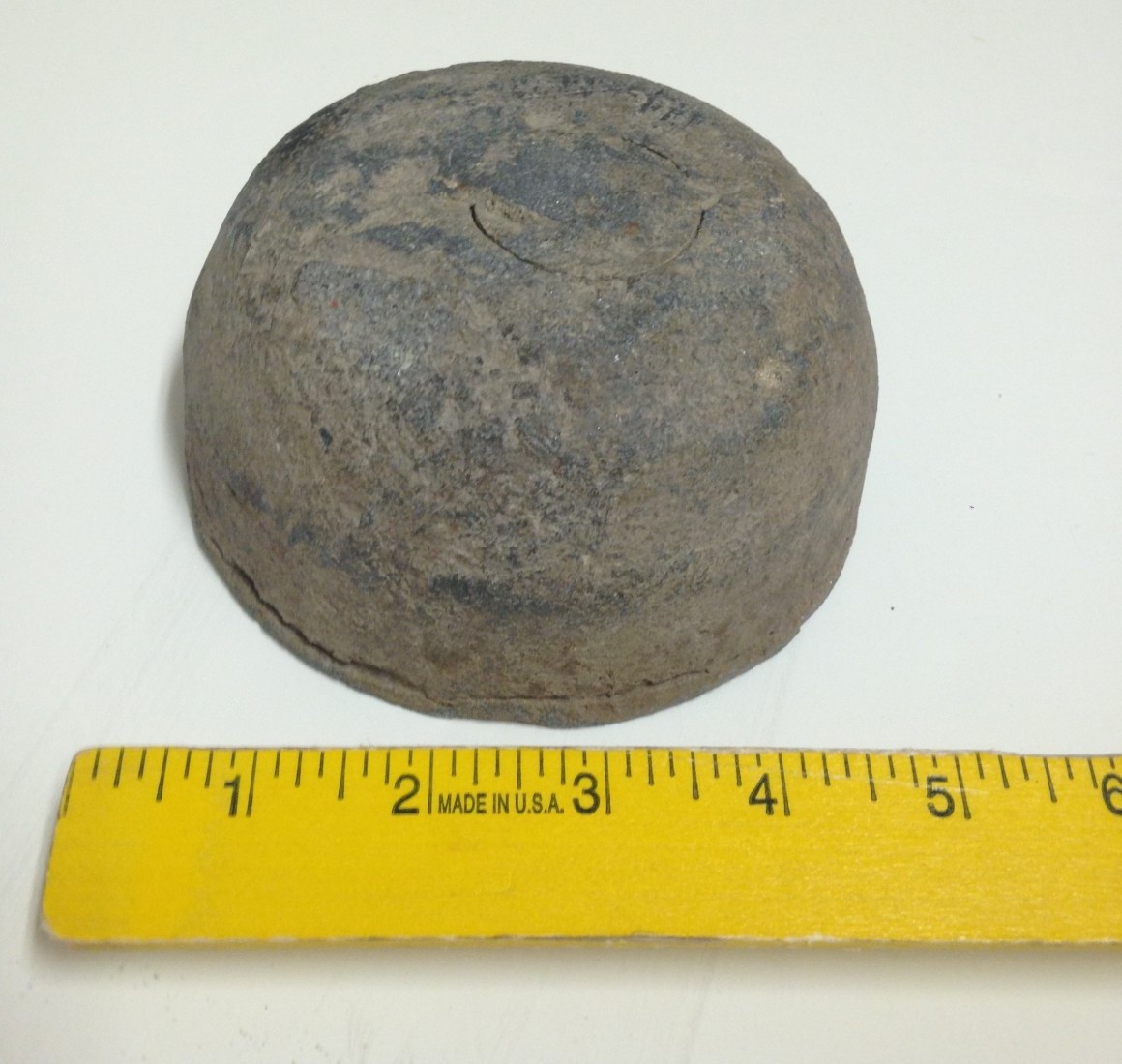
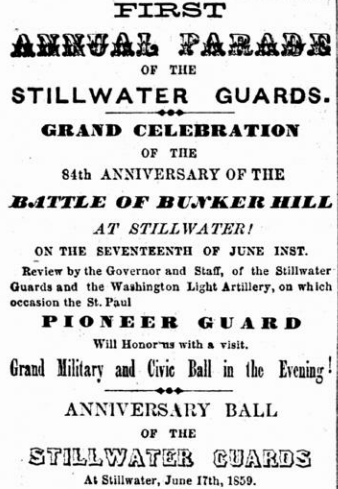
 There are two major challenges when researching the history of the Warden’s House. Since the home was built and owned by the Territorial and then State governments of Minnesota, it was never on the tax rolls so the taxable value and other details were never recorded. Secondly, building permits were not required until the late 1880s and most additions to the Warden’s House were completed by the 1870s. These two facts right there immediately cut out two extremely valuable resources. Moreover, many records were lost or destroyed when the prison was moved to Bayport in 1914.
There are two major challenges when researching the history of the Warden’s House. Since the home was built and owned by the Territorial and then State governments of Minnesota, it was never on the tax rolls so the taxable value and other details were never recorded. Secondly, building permits were not required until the late 1880s and most additions to the Warden’s House were completed by the 1870s. These two facts right there immediately cut out two extremely valuable resources. Moreover, many records were lost or destroyed when the prison was moved to Bayport in 1914.
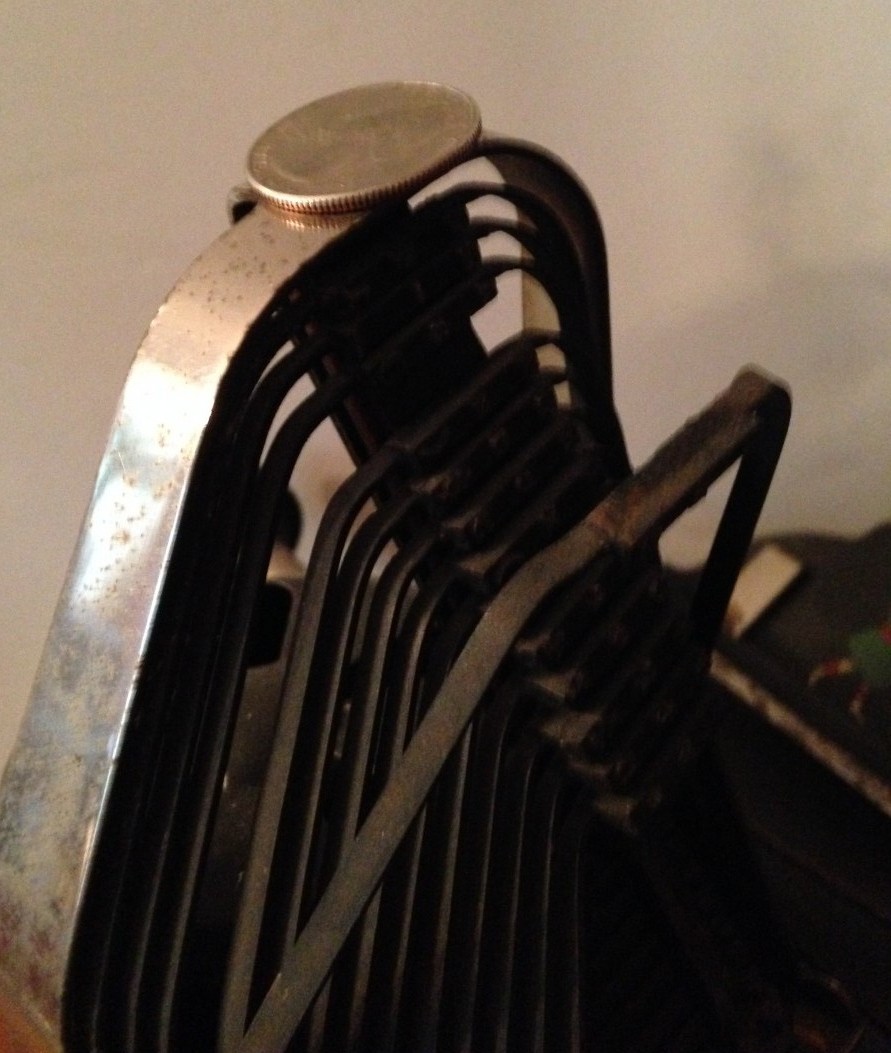
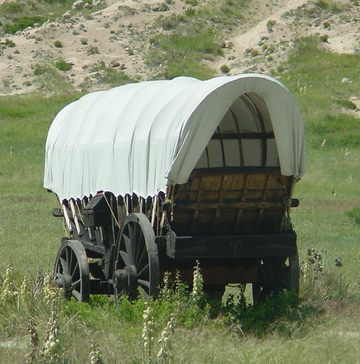 “Andrew Quinn brought the Rutherfords from Bath to Danville, where they took a canal boat and rode to Buffalo. There they took the Henry Hudson and came to Chicago. At Chicago they went to a hotel and it was so marshy, the hogs were wallowing in the mud in front of the hotel. Father went to John Rutherford’s and brought a team and took us out there. Father, Dan, John, and Dick (brother) went up town and brought a team and covered wagon. In this rig they drove to Galena.
“Andrew Quinn brought the Rutherfords from Bath to Danville, where they took a canal boat and rode to Buffalo. There they took the Henry Hudson and came to Chicago. At Chicago they went to a hotel and it was so marshy, the hogs were wallowing in the mud in front of the hotel. Father went to John Rutherford’s and brought a team and took us out there. Father, Dan, John, and Dick (brother) went up town and brought a team and covered wagon. In this rig they drove to Galena.





 Join author and award winning journalist Rick Shefchik on Sunday, May 15th, 2016 at 2:00 PM at the Warden’s House Museum for a free presentation on Minnesota’s Rock N’ Roll history.
Join author and award winning journalist Rick Shefchik on Sunday, May 15th, 2016 at 2:00 PM at the Warden’s House Museum for a free presentation on Minnesota’s Rock N’ Roll history.

 On June 11, 1942, the pilot training school and its fields were inspected by Major Gen. George E. Stratemeyer, commander of the Southeast Air Corps Training Center. The general was reported to be “pleased with the layout and progress of the school.” Every other week, 250 students arrived for two weeks of training. These were Air Corps volunteers and almost to the man – not a single had flown before. North and his instructors gave them flight training in about 20 planes. Instructors worked 7 days a week, dawn to dark, any time the weather was fit to fly. Students flew the planes eight hours with the power on, and then eight hours with no power what so ever including dead-stick landings to simulate operating a glider.
On June 11, 1942, the pilot training school and its fields were inspected by Major Gen. George E. Stratemeyer, commander of the Southeast Air Corps Training Center. The general was reported to be “pleased with the layout and progress of the school.” Every other week, 250 students arrived for two weeks of training. These were Air Corps volunteers and almost to the man – not a single had flown before. North and his instructors gave them flight training in about 20 planes. Instructors worked 7 days a week, dawn to dark, any time the weather was fit to fly. Students flew the planes eight hours with the power on, and then eight hours with no power what so ever including dead-stick landings to simulate operating a glider.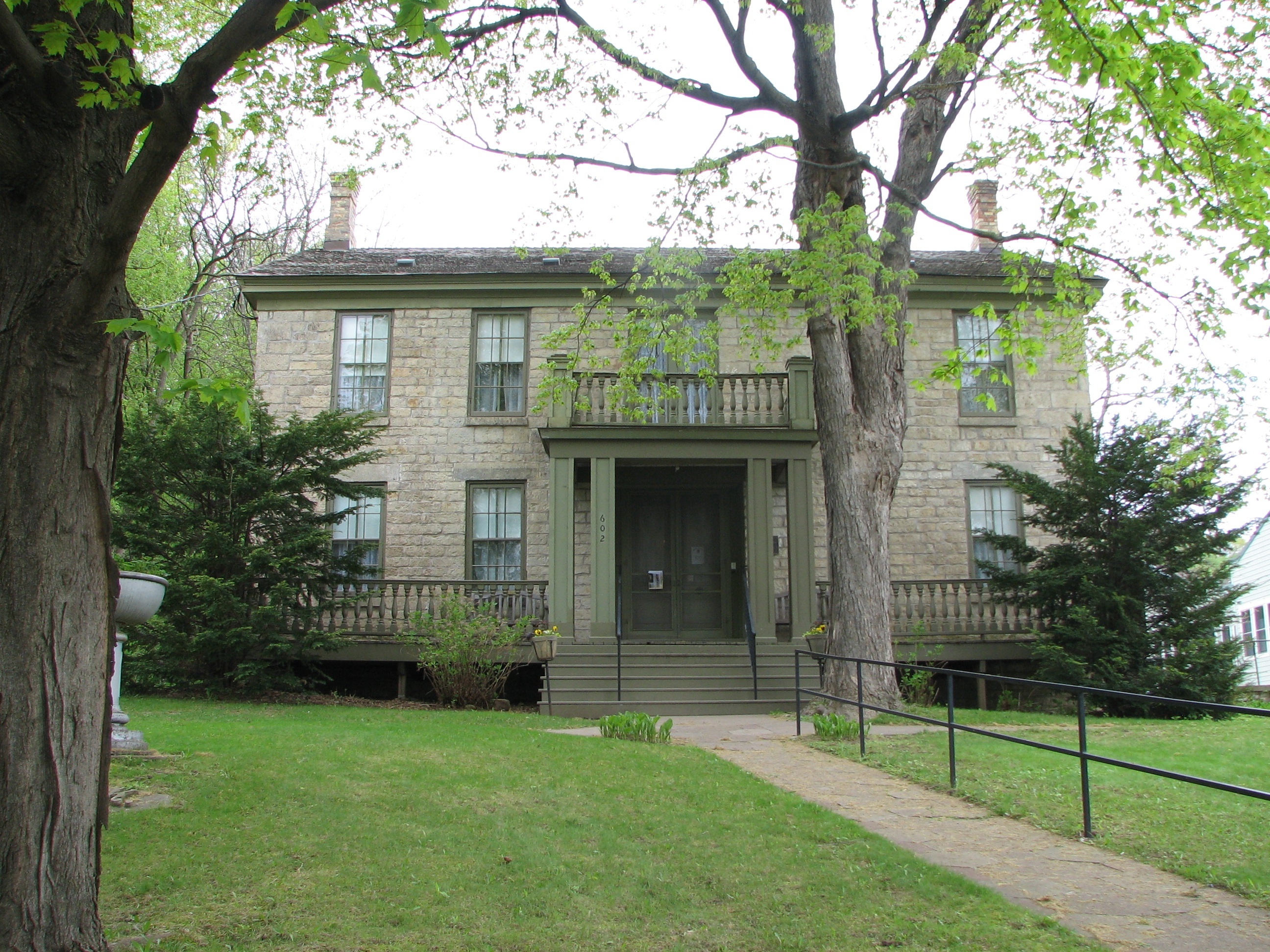 75th Annual Warden’s House Open House
75th Annual Warden’s House Open House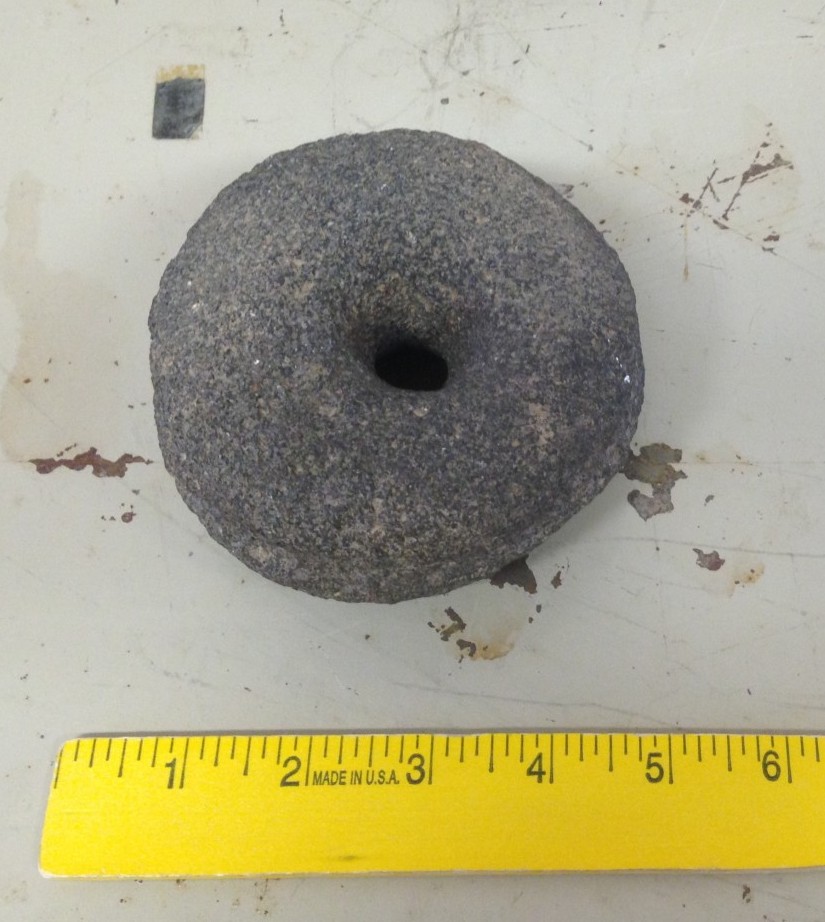
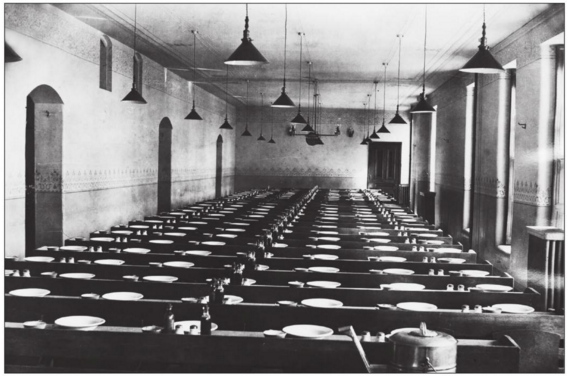


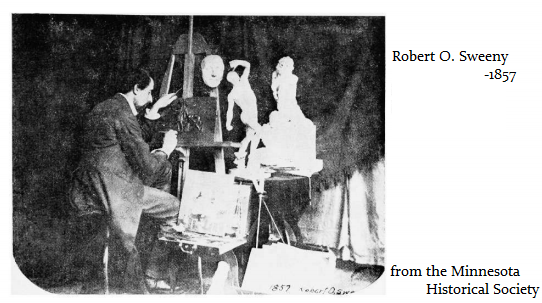
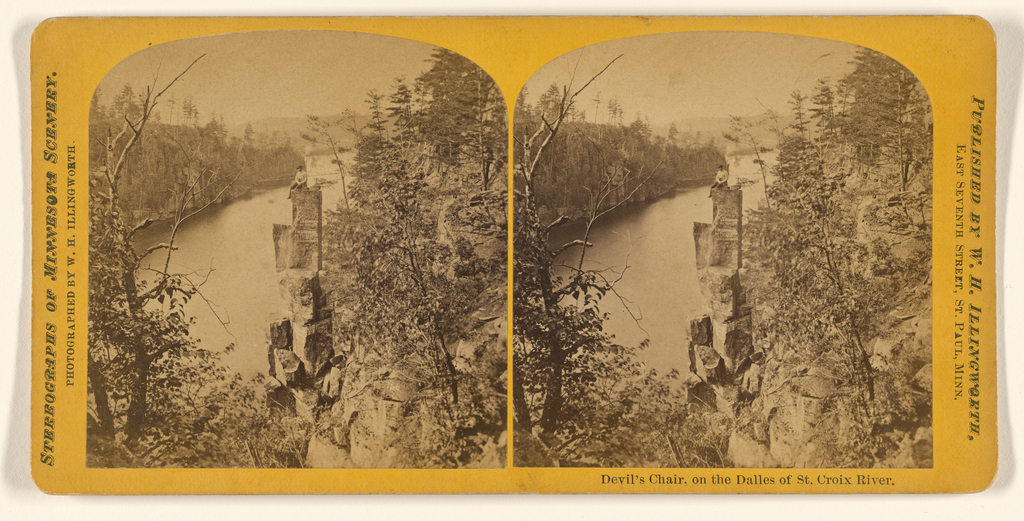
 WCHS Annual Membership Meeting with Jumpin’ Jim Brunzell
WCHS Annual Membership Meeting with Jumpin’ Jim Brunzell

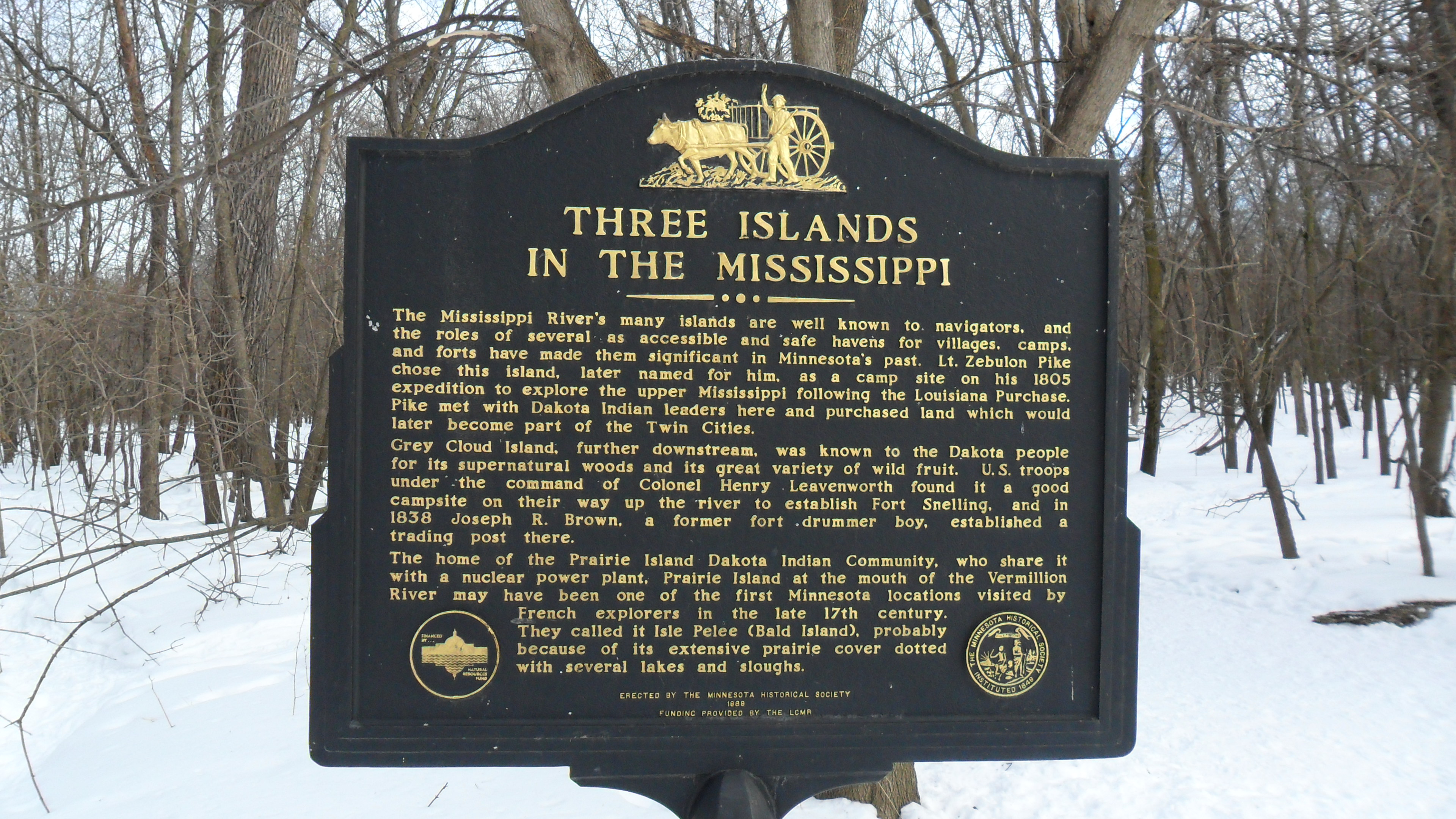 “A dozen miles or more down the Mississippi from St. Paul is Grey Cloud Island, a singular formation rising out of the river with its central portion hundreds of feet above the low-water mark, and varied in its natural character and topography” wrote a Pioneer Press journalist in the late 1890s. “It stretches for five miles into hills, woodlands, meadows, swamps, and waterways. There are granite boulders, sandstone cliffs, sandy shores and rich farm lands.” The newspaper writer tells us that every old settler knows the locality. It was one of the first portions of Minnesota white settlers made their home.
“A dozen miles or more down the Mississippi from St. Paul is Grey Cloud Island, a singular formation rising out of the river with its central portion hundreds of feet above the low-water mark, and varied in its natural character and topography” wrote a Pioneer Press journalist in the late 1890s. “It stretches for five miles into hills, woodlands, meadows, swamps, and waterways. There are granite boulders, sandstone cliffs, sandy shores and rich farm lands.” The newspaper writer tells us that every old settler knows the locality. It was one of the first portions of Minnesota white settlers made their home.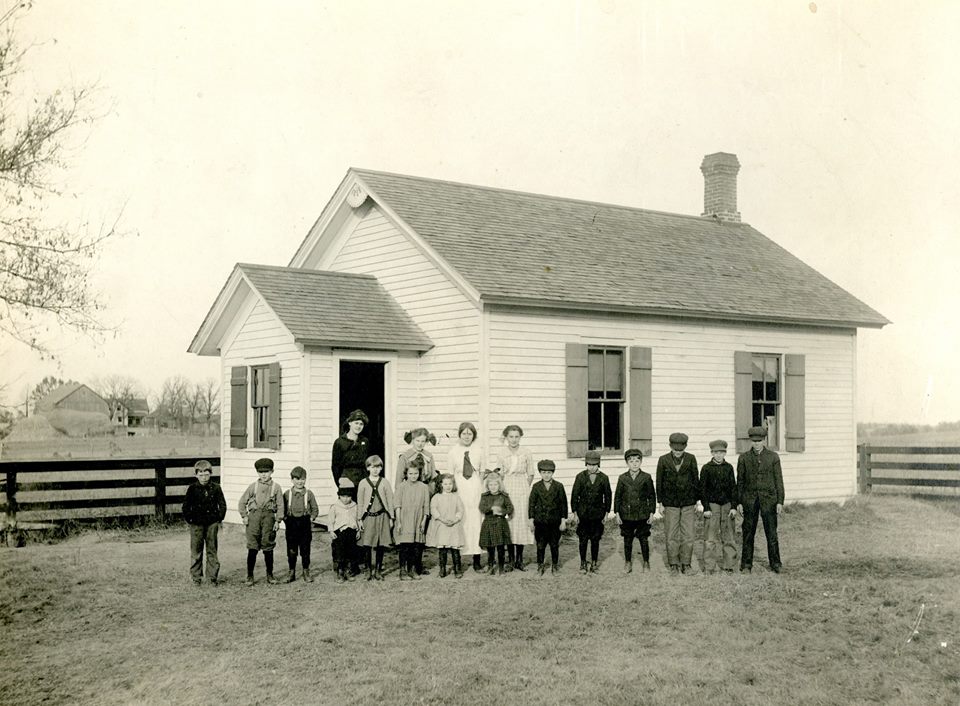 The Oakdale-Lake Elmo Historical Society has transferred its collection to the Washington County Historical Society.
The Oakdale-Lake Elmo Historical Society has transferred its collection to the Washington County Historical Society. On May 23, 2004, Myrtle Eder and Myrtle Hunstiger attended the grand opening. Mrs. Hunstiger, age 105 at the time of the opening, was a teacher in the school in 1918 and 1919. Mrs. Eder was one of her former students at the school.
On May 23, 2004, Myrtle Eder and Myrtle Hunstiger attended the grand opening. Mrs. Hunstiger, age 105 at the time of the opening, was a teacher in the school in 1918 and 1919. Mrs. Eder was one of her former students at the school.



